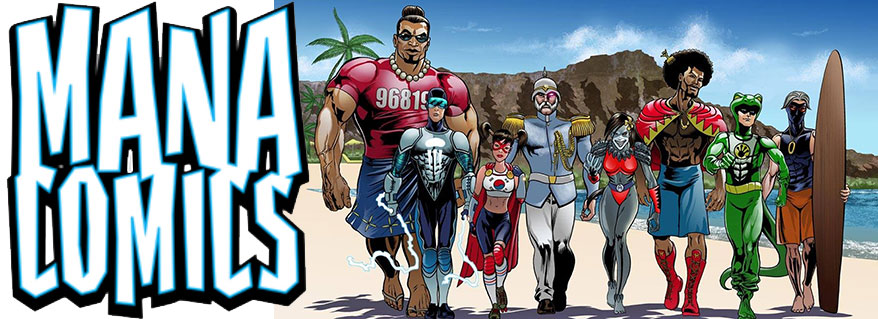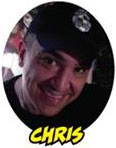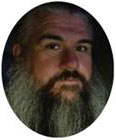Aloha! My name is Christopher Caravalho, and I'd like to take a moment to explain the creative process that goes into my comic books. The first step starts with the script. I write out a rough draft of the story and separate it into pages. The script is normally 30-40 pages long. Next, I break down the script for each page into panels. Panels are the boxes the comic art is drawn in. I tend to use 6-9 panels per comic page. When I write the description for what is going to fill each particular panel, I try to be as detailed as possible because the artist needs this important information to do their job. Once I complete the script, page and panel breakdowns, I hand the script to the layout artist.
Kris Lohman
Kris Lohman is my layout artist. Kris looks over my script and begins to draw thumbnail sketches of each page. Thumbnail sketches are very loosely sketched drawings. He uses my panel descriptions to draw sketches of the characters. His job is very important because he decides how the heroes should be posed in each panel. After I approve the thumbnail, Kris proceeds to draw each page onto a sheet of 11 x 17 paper. Kris is an extraordinary artist and lays the strong foundation that makes the job of the penciler and inker so much easier.
*Kris Lohman graduated from Castle High School and resides in Kaneohe. He is a husband and father of two sons. Kris is also working on a separate comic book entitled "The Dwarfstar Chronicles", a Sci-Fi fantasy meets storybook fiction.
Chris Caravalho
I do the finished pencils and inking of the comic art. Having Kris as the layout artist saves so much time on creating a comic book because at this point, I just have to finish what has already been started. I tighten the pencils on the characters, create the scenery, and finally use a black pen to ink all the penciled work. I then scan the pages and send the art to the colorist.
Claudia Palescandolo
Claudia is my digital colorist. She uses a computer program to color the comic art. Communication and a level of trust must be established because the colorist has to look at the art and wonder, "Okay, what is that? What color should I make this?" Being the creator, I have a certain vision of how things should be, but I can't describe how every single person, place or thing should be colored in each panel. Claudia is so talented that she can make do with the information she has and apply very beautiful, breathtaking and vibrant colors to the artwork. Once the colors are completed and approved, they get sent to the letterer.
*Claudia lives in Bologna, Italy. She is a graduate of the International School of Comics where she acquired her digital coloring skill set. If she's not coloring, she's out exploring or eating a slice of pizza and enjoying episodes of Firefly. She is also a colorist for other titles such as B-Squad: Soldiers of Misfortune and Quebrada Second Fall.
Kel Nuttall
Kel is my letterer. He works on the computer to place words, word balloons and sound fx words on the art. He has to ensure that the script can fit within the balloons and the panels. It may seem like an easy enough job, but it can be very challenging. Kel is the last stop before the printers. That means he ends up having to catch any mistakes made along the way. He often has to do extra duties that can include trimming the script or suggesting a change in the artwork to improve the flow of the story and make it better understood by the reader. When Kel's work is complete, he sets the file to spec and off it goes to the printers.
*Kel is a veteran of the comic industry and has been working as a letterer for nearly twenty years. He has worked on such titles as Critter, The Standard, and Tall Tales from the Badlands. Kel is originally from North Pole, Alaska, but currently wanders the states with his computer and his trusty sidekick, Mr. Wooks.





